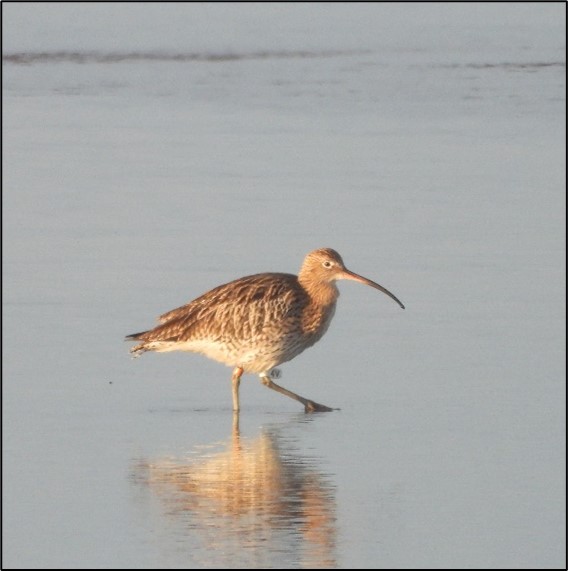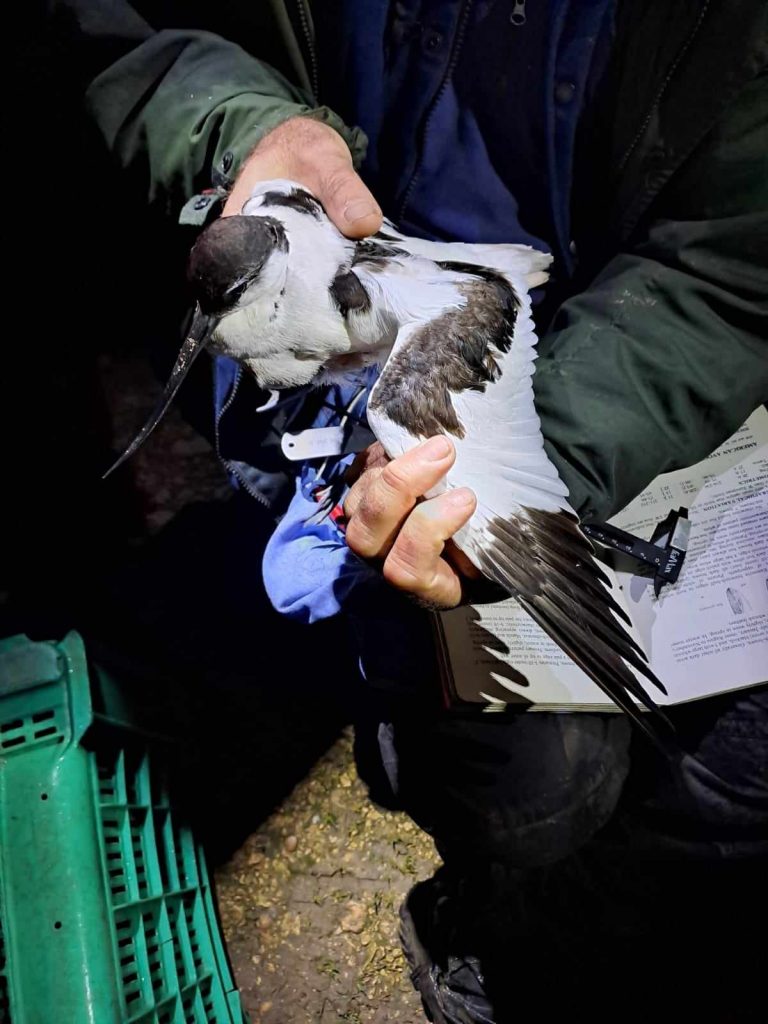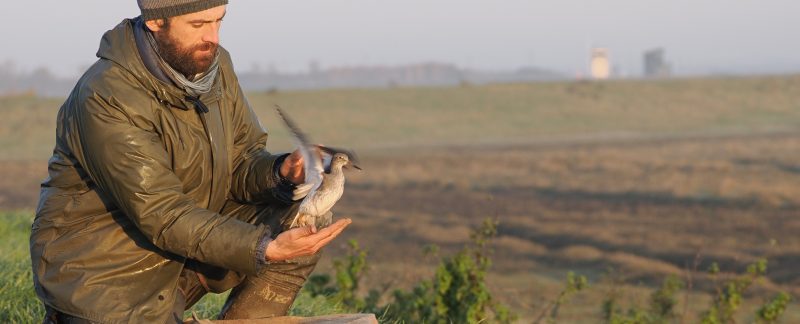Friday 10 November
Report on recce at Heacham Dam by Hilary & Cathy
We arrived at Heacham Dam at 13:10, when it was sunny with a rather gusty stiff breeze. A pre-roost flock of 350 Oystercatcher had formed just south of Heacham Dam. They were on mud close to the tideline and mixed with <10 each of Curlew, Knot, Ringed Plover, Grey Plover, Sanderling and Turnstone.
Small flocks of Oystercatcher flew in from the north, but larger flocks flew off to the south as the tide approached. At 13:50 the tide reached the edge of the sand/shingle but by then all the birds had flown south, despite there being no disturbance by humans or dogs. At 14:10 we noticed a flock of 25 Oystercatcher on the sand/shingle c. 100 m north of Heacham Dam. These were quickly disturbed by dog walkers and flew off south. It was concluded that there was no realistic catching opportunity.
Most people arrived at the base house in the early evening and, once nearly everyone had arrived, there was a team briefing to give people a chance to be introduced to each other and to discuss the plans for the weekend. There was a good mix of people with plenty of experience and those that were joining the group for the first time. Although it seemed unlikely to be successful, it was suggested to recce for cannon-netting opportunities the next morning whilst resighting. If this failed, the plan was for a mist netting team to head to Gedney at midnight on the Saturday evening to set nets and catch birds coming in to roost in the early hours of Sunday morning. A team would go to Gedney on the Saturday morning to plan routes and net positions.
Saturday 11 November
Four teams went out at 06:15 to resight flags on a falling tide. Teams initially headed to Snettisham, Heacham South, Heacham North and Hunstanton (Turnstones), then converged at Heacham Far North before either heading home or for a quick look at RSPB Titchwell.
A total of 58 birds, of four species, ringed by the Wash Wader Research Group were resighted over the entire weekend and this would have been more if it had been less windy on the Saturday morning. A colour-ringed Bar-tailed Godwit from a different scheme was also seen but no details were available on that by the time this report was produced.

| Species | Sightings | Individuals |
| Curlew | 56 | 40 |
| Bar-tailed Godwit | 11 | 11 |
| Turnstone | 7 | 6 |
| Grey Plover | 1 | 1 |
Amazingly, two meals were squeezed in to a five-hour period in the afternoon and those that were going mist-netting headed to bed at 18:00 ready to wake at midnight.
Sunday 12 November
A team of ten arrived at Gedney Marsh at 01:00 and set up markers along the route to the pools where catching was to take place. Low-lying mist made this particularly important on this occasion. A gpx file was also shared on the group chat to add another layer of safety. On arrival at the catching site, some concern was expressed at the size of the pools. However, the team progressed as planned and eventually the catch was considered a success, even though the mist lingered throughout the hours of darkness and the pools were a bit on the small side.
Two straight lines of five nets each were set in parallel lines either side of the pools and adjusted to form slight zigzags after setting. Tapes were played from around 02:00 and catching progressed steadily until an hour or so before high tide at 05:21. Birds were kept near the nets until catching ceased and taken back to the base at the sea wall in one go. Birds were then ringed, processed and released. Catch totals are given below. Of definite note was the Avocet, which was just the fifth record of this species ringed by us. Only 2,550 Avocet had been ringed in Britain & Ireland to the end of 2022, the vast majority of which were nestlings with single figures of fully grown birds ringed in each of the last few years.

HPAI protocols were followed throughout. Batches of birds were dealt with separately and all equipment was disinfected between batches. Keeping cages, ground sheets and all other equipment were disinfected again afterwards.
| Species | New | Retrap | Total |
| Oystercatcher | 1 | – | 1 |
| Avocet | 1 | – | 1 |
| Grey Plover | 1 | – | 1 |
| Dunlin | 49 | – | 49 |
| Black-tailed Godwit | 1 | – | 1 |
| Bar-tailed Godwit | 1 | – | 1 |
| Redshank | 14 | 1 | 15 |
| Starling | 9 | – | 9 |
| Total | 77 | 1 | 78 |
Two carloads of people, that weren’t mist-netting, went out on the Sunday morning to get some more resights for the weekend. Sam and Tim went to Snettisham and fields and Hilary and Lucy (plus kids!) went to Heacham and Heacham North North. Their totals are included in the resightings table above.
Cathy and Tim were busy throughout the weekend, and beyond, continuing the redecorations at the base and doing general housekeeping jobs.
Thanks to Ed Stubbings for writing this report. Cover image by Cathy Ryden.

